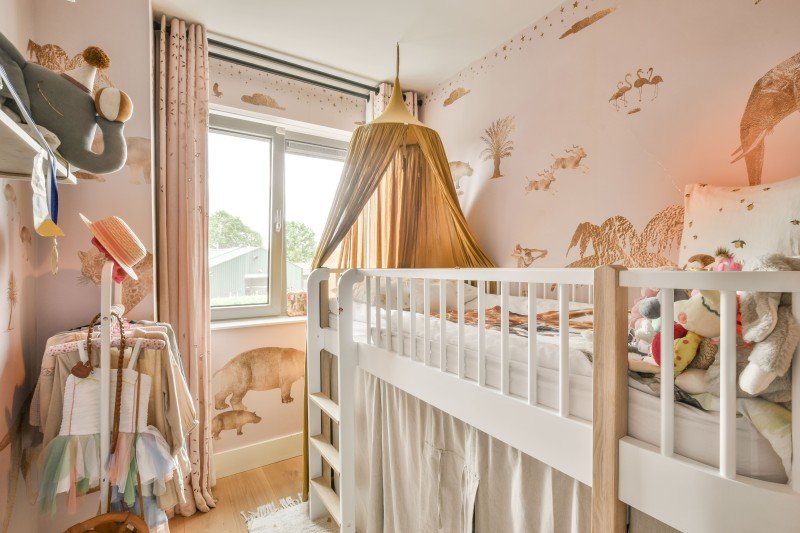Exploring Bunk Beds: A Comprehensive Guide
Bunk beds have actually long been a staple in children's bed rooms, dorm rooms, and even homes with minimal space. Not just do they supply a useful sleeping option, however they also develop an enjoyable and creative environment for kids and a great space-saver for adults and families. This post will check out everything you require to understand about bunk beds, from types and materials to safety suggestions and buying advice.
Tabulation
- Types of Bunk Beds
- Traditional Bunk Beds
- Loft Beds
- Triple Bunk Beds
- L-Shaped Bunk Beds
- Product Options
- Wood
- Metal
- Security Considerations
- Buying Guide
- Frequently asked questions
Kinds Of Bunk Beds
Bunk beds are available in numerous styles to match various requirements and choices. Here's a breakdown of the most common types:
Conventional Bunk Beds
Traditional bunks usually include 2 beds stacked vertically on top of one another. These beds are perfect for siblings sharing a space or for optimizing sleeping space in visitor rooms.
Loft Beds
Loft beds stand likewise to standard bunk beds however do not have a lower sleeping location. Rather, they often incorporate a desk or seating area underneath, making them a great option for small rooms requiring multifunctionality.
Triple Bunk Beds
Triple bunk beds are developed for three occupants, with beds stacked in a three-tier setup. These are less common but can be a fun service for large households or sleepovers.
L-Shaped Bunk Beds
With one bed placed horizontally and the other vertically, L-shaped bunk beds are typically geared up with extra functions such as desks or storage drawers and can complement corner spaces in a space.
Contrast of Bunk Bed Types
| Bed Type | Perfect Use | Description |
|---|---|---|
| Standard | Shared bedrooms or guest rooms | 2 beds stacked vertically |
| Loft | Small rooms requiring multi-purpose space | Upper bed with open space beneath |
| Triple | Large households or slumber parties | 3 beds stacked vertically |
| L-Shaped | Corner or versatile spaces | A combination of vertical and horizontal beds |
Material Options
Bunk beds are manufactured from numerous materials, with wood and metal being the most typical. Each product has its pros and cons.
Wood
- Sturdiness: Generally robust and can endure years of use.
- Aesthetic Appeal: Offers a classic appearance that can mix with different designs.
- Weight Capacity: Typically sturdier; can support heavier weights.
- Disadvantages: May be more expensive than metal options and can be susceptible to scratches.
Metal
- Sturdiness: Generally light-weight and simple to move however still tough.
- Modern Design: Often is available in streamlined designs, making it appealing for contemporary spaces.
- Economical: Usually more economical than wood choices.
- Downsides: Can be cold to the touch in winters and might not have the exact same aesthetic appeal for some purchasers.
Security Considerations
When it comes to bunk beds, security can not be overlooked. Here are essential safety tips to remember:
- Guardrails: Ensure that the top bunk has guardrails on both sides to avoid falls.
- Sturdy Construction: Check for a solid build and sturdy materials to withstand weight and movement.
- Weight Limit: Adhere to the manufacturer's weight limit for both the upper and lower bunks.
- Ladder Design: Choose bunks with a safe, easy-to-climb ladder and avoid any sharp edges or rungs.
- Age Restrictions: Most producers recommend that kids under the age of 6 should not sleep in the upper bunk.
Purchasing Guide
When searching for bunk beds, think about the following aspects to find the very best fit for your needs:
- Space Availability: Measure the space size and ceiling height, making sure there is adequate space for the leading bunk.
- Bed Size: Decide in between twin, complete, or larger sizes based upon your requirements and the size of the room.
- Style Preference: Consider the general design of the bed room to discover an ideal design.
- Alleviate of Setup: Look for a bunk bed that is simple to put together.
- Budget plan: Bunk beds come in numerous rate ranges, so figure out a budget plan before beginning your search.
FAQs
1. What is Bunk Beds For Kids advised age for children to sleep on the leading bunk?
Kids aged six and older are usually suggested to sleep on the leading bunk to lessen the threat of falls.
2. How can I make my bunk bed safer?
To improve safety, ensure guardrails are effectively set up and examine that the bed is placed on a flat surface area. Additionally, motivate children to use the ladder carefully.
3. Can I transform a bunk bed into two different beds?
Numerous bunk beds are developed to be convertible. Examine the manufacturer's specs for convertibility functions.
4. What devices are available for bunk beds?
Common accessories include bed linens, storage drawers, staircases rather of ladders, and tented canopies for a fun visual appeal.
5. How do I preserve my bunk bed?
Regular look for loose screws or structural stability can help ensure safety. Dust the bed routinely and clean spills quickly to keep the products in good condition.
Bunk beds are flexible and a space-efficient service for numerous living situations, from children's rooms to guest lodgings. With many styles and materials available, possible purchasers have a wealth of alternatives to consider, making sure a mix of functionality and visual appeals. By prioritizing security and following the tips detailed in this guide, individuals can find the best bunk bed that fits their space and lifestyle, all while developing a satisfying sleeping environment.

